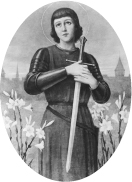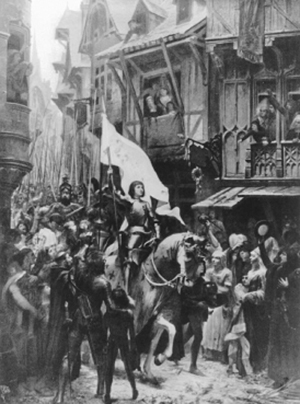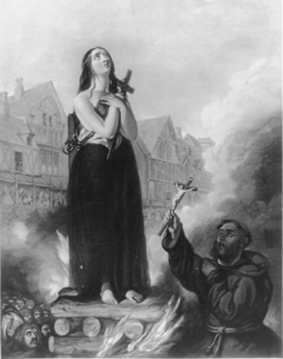Joan of Arc’s name is so familiar that we forget how amazing her story really was.

Joan of Arc was just a seventeen-year-old peasant girl when she led a French army to a momentous victory against the English at Orleans in 1428.
Joan had been hearing voices since the age of thirteen, and they told her that God wanted her to help Charles, the Dauphin (heir to the French throne), defeat the English and be crowned king. What she did to make that happen—in a time when women were regarded as property—beggars the imagination.
1. She talked her uncle into taking her to the local military commander.
2. She convinced the commander to provide a military escort to take her to the Dauphin.
3. She convinced a group of priests that God was really speaking to her, and that she should be allowed to meet with the Dauphin.
4. In less than five minutes she convinced Charles to give her an army.
5. She persuaded grizzled veterans of the war against England that they should take orders from a seventeen-year-old girl. Further, she got them to give up cursing and sex while serving under her.
6. In an age when war meant hand-to-hand combat, even for commanders, Joan survived numerous battles while never wielding a weapon.
7. Not only did she lead her army to victory at Orleans, she also liberated dozens of French towns and defeated another British army at Patay.
Was Joan actually inspired by God? Her soldiers thought so, and so did the Catholic Church, which made her a saint. If divine inspiration didn’t actually play a role, Joan certainly had amazing powers of persuasion and one hell of a run of luck.
“HERE BEGIN THE PROCEEDINGS IN MATTER OF FAITH AGAINST A DEAD WOMAN, JEANNE, COMMONLY KNOWN AS THE MAID.”
— THE OPENING WORDS FROM THE RECORD OF JOAN OF ARC’S HERESY TRIAL


Captured by opposition French forces and handed over to the British, Joan was tried for heresy. The trial was rigged and the verdict certain, though the prosecution could not produce a single witness to speak against her. Nonetheless, she was burned at the stake on May 30, 1431.